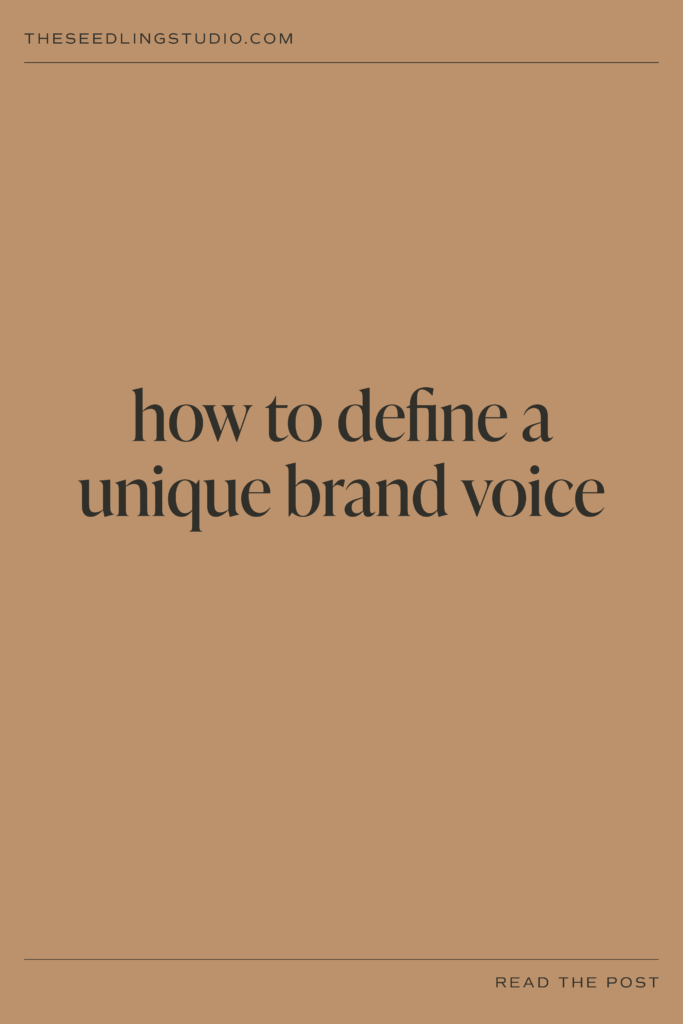What’s one thing all successful brands have in common? Nope, it’s not a six-figure startup fund or a wealthy board of directors. It’s a clearly defined brand voice.
Don’t believe me? Let’s do a little experiment. Read through each of the following brand names. Pause and close your eyes after you read each one, and make note of the words that pop into your head.
Apple.
Lululemon.
Southwest Airlines.
Target.
Chances are, reading these brand names evoked some of the same emotions, words, and images for you that they did for me. When you think of Apple, you probably think of terms like “sleek,” “innovation,” or “cutting-edge.” Target, on the other hand, brings to mind words like “friendly,” “accessible,” and for me, “try not to buy yet another coffee mug.”
This is not by accident – it’s by design! These brands have carefully considered their messaging standards and, over time, have refined them to cater to their customers.
Brand messaging isn’t a luxury reserved for big-name corporations – it’s the foundation of every successful brand, big and small. Your words are your most powerful selling tools. They set the stage for every other aspect of your business, from the graphic imagery you use to the actual products and services you sell.
So, how can you make sure you nail your brand messaging from the very beginning?

Boring-Proof Your Brand: How to Define a Unique Brand Voice
In this post, we’ll be breaking down five key questions that will help you define a unique brand voice that sets you apart from the competition. You can use these insights in every piece of copy you write, from your website content to email newsletters and Instagram captions.
An important note: the lines may blur a little between your answers to these questions and your brand’s answers. That’s completely okay! As entrepreneurs, we often infuse our personalities into our businesses. That’s normal, and you shouldn’t worry about it.
1. Who are you talking to?
Before you can make decisions about how your brand communicates, you first need to have a thorough understanding of who it is you’re talking to.
Think about it – when you’re first meeting new people, you don’t know anything about them. Their background is a mystery, so you don’t know what topics of conversation will resonate with them. You aren’t familiar with their senses of humor, so there’s no telling how they’ll respond to the jokes you tell.
Alternatively, when you’re talking with a friend, you know about her interests, experiences, and opinions. This makes it so much easier to start a conversation and build a connection with her.
This is why, in branding, so much emphasis is placed on understanding your client. Once you know who it is you’re talking to, you’ll be much better able to speak to her in a way that resonates. You’ll know which pop culture references she’ll get and which ones will fly straight over her head.
So, if you haven’t already, take the time to flesh out who your target audience is. Think about their age demographic, the stores they shop at, and how they spend their free time.
There’s a common marketing saying that says, “If you’re speaking to everyone, you’re speaking to no one.” Developing a clear picture of your client will make every piece of writing you do for your business so much easier and more effective.
In the Brand Messaging Blueprints we create for our clients, we do a complete deep-dive on your target audience as one of our first steps. We keep this audience front-of-mind as we develop the rest of your brand’s messaging, so the resulting copy speaks directly to the people you’re trying to reach.
2. How do you want to make people feel?
Words evoke emotion! With every piece of copy you write, whether it’s for your website, a video script, or a social media post, you have the power to influence the way people feel.
Here’s a list of some emotions you might strive to elicit:
- Inspired
- Empowered
- Uplifted
- Excited
- Calm
- Free
- Confident
- Put-together
What adjectives do you hope people will use to describe your brand? Decide on a list of three to five words you can envision people saying, “That brand is so ____.”
These will become your guideposts as you create brand messaging and content for your business. Every time you write something for your brand, you can do a quick gut-check to make sure the tone of your writing conveys these emotions.
3. If your brand were a clothing store, which one would it be?
I love this question for two reasons. First, it gives you more information about your target audience. And second, it helps conceptualize your brand voice in a way that’s concrete.
(If your brand is a clothing store, try comparing it to a homewares store or some other industry instead!)
Nordstrom shoppers are very different from Anthropologie shoppers. You’ll see this difference reflected not only in the two companies’ brand visuals but also in their brand messaging – the words they use to connect with their customers.
Answering this question might also help you answer the previous one. What adjectives do you use to describe that clothing store? What does it feel like when you shop there or scroll through their website?
As you begin to write for your brand, study some of the copy on this clothing store’s website and their brand materials. Note the elements of language that communicate a distinct style or tone, and see how you can infuse some of that language into your copy.
4. Which speech patterns does your brand use?
This is the fun part! Defining speech patterns, or “quirks” in your brand’s language, is one of the best ways to differentiate your brand voice.
You can think of these as isms, or speech characteristics you use throughout your brand’s communication.
For example, do you write words in ALL CAPS for emphasis? Do you use drawn-out letters to show you’re reeeeeeeally passionate about something? What about your use of bold and italics to drive home a point?
Another way these characteristics might show up is through your use of slang terms related to your business’s origin or brand vibe. If you’re a Texas-based brand, for instance, you might use terms like “y’all” or “fixin’ to.” If your brand has Italian roots, you might throw in a few “grazie!”s.
Don’t be afraid to infuse your copy with personality. BUT, make sure to never sacrifice clarity for the sake of cutesy copy.
Overusing isms can backfire – you don’t want to use so many personality-driven phrases that your message gets lost in translation. So, instead of drowning your words in fluffy language, sprinkle in branded terms sparingly.
5. On a scale of 1-5, how formal is your brand’s communication?
The final step in defining your brand voice is to determine the level of formality you’ll use when writing for your business. Most businesses fall somewhere around a three on a one-to-five formality scale (one being the most casual).
In general, a good rule of thumb is to write as if you’re talking to a new friend. This shows that you’re professional, but it also leaves room for you to be real with people and connect with them person-to-person.
Some exceptions to this rule would apply if your business is geared toward academics, scientists, or business professionals, or, on the opposite end of the spectrum, if you’re aiming to make “casual” one of your core brand identifiers.
Your answers to these five questions will give you an amazing starting point for writing that feels true to you and your brand! I recommend using these questions as a final check before you hit publish on every piece of content.
Which question helped you the most? Let me know in the comments!
Now that you’ve got a handle on your brand voice, let’s put it to good use!
Download our FREE Homepage Copywriting Guide to wow your website visitors on their first click.





2 Responses
That is really interesting, You are a very skilled blogger.
I have joined your feed and stay up for looking for
extra of your great post. Also, I’ve shared your site
in my social networks
Thank you! 😊